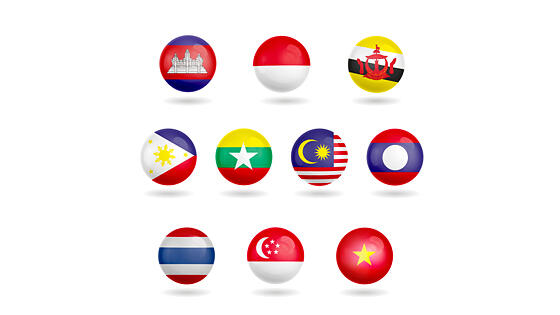February 20, 2024 Itaru Saito (JST Asia Pacific Research Center Fellow)
In 2023, the Association of Southeast Asian Nations (ASEAN) will mark the 50th anniversary of friendship and cooperation with Japan, and meetings to commemorate this were held in various locations, reaffirming its geopolitical importance today. In this article, I would like to turn our attention to cooperation with the United States, which is an important partner outside the Asia-Pacific region, take a bird’s-eye view of various recent trends, and consider what suggestions can be gleaned from them.
As a dialogue partner country of ASEAN, the United States (hereinafter referred to as the United States) began diplomatic involvement in 1977, ten years after its establishment, and has been providing scientific and technological cooperation in the form of consultation (expert advice). . In the 2010s, the field of cooperation has expanded, and we have focused not only on political security, mainly the South China Sea issue, but also on development cooperation, including technology, education, disaster prevention, and food security1. At the summit, cooperation between the two regions was upgraded to a comprehensive strategic partnership.
The main arena for interaction among researchers in the field is the Science, Technology and Innovation Cooperation (STIC) annual conference. The 2023 conference was held in Jakarta in September, and discussions focused on sustainable smart cities, circular economy, and entrepreneurship education2. ASEAN disseminates information through the “STIC Portal” with support from the U.S. Department of State’s Bureau of East Asia and the Pacific and Arizona State University, which is ranked at the top of university rankings for entrepreneurship education and other areas.
In terms of notable financial support, in 2022, the US Department of State’s Bureau of East Asia and the Pacific solicited funding of over US$3.45 million3.
On February 6, 2024, ASEAN launched a talent mobility portal and online education platform within the “STIC Portal” with support from the US Department of State’s Bureau of East Asia and the Pacific and Arizona State University. Divided into three tracks: “Science and Technology (S&T),” “Entrepreneurship and Innovation (E&I),” and “Industrial Professional Qualifications,” we collaborated with Coursera, a major massive online education (MOOC) company, to provide science and technology courses from academia to industry. In addition to providing a wide range of reskilling and skill-up opportunities for technical talent, those who have completed the six-month course and acquired advanced skills will receive a $12,500 seed stage (the highest level of research and development). (Initial) You will be given the right to apply for the grant.
On the STIC Portal homepage, science and technology performance indicators for ASEAN and member countries are visualized on a dashboard. In addition, results reports (survey results) of incubator education programs conducted in the past under the STIC project have also been published. In addition to face-to-face meetings, we also provide opportunities for communication and interaction through SNS (online exchange services) such as Facebook and Instagram.
By 2023, ASEAN has reached milestones in its diplomatic relations with the EU (European Union) and Japan, and it can be seen that it is also deepening its cooperative relationship with the United States. We will be watching closely to see if Japan will continue to increase its presence in diplomacy with developed countries.
